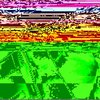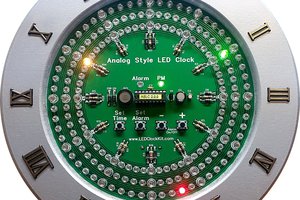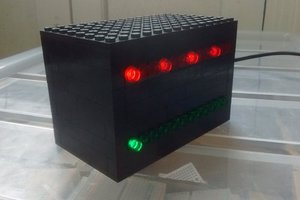Origami Digits
Modular Origami
The origami digits are made with what is called modular origami. Unlike traditional origami where the model is made using a single piece of paper, modular origami involves making a bunch smaller (and usually identical) modules (or units) which are then interlocked to create a larger structure. Modular origami is usually used to make geometric shapes as the units are all the same size and interlock at the same angles which lends itself well to repeated geometric shapes.
Phizz Units
The units used in this project are called phizz units (pentagon hexagon zig zag units) created by a mathematician named Thomas Hull. His webpage shows how the unit is made and talks a little on the math behind it. The phizz unit most naturally links together to create rings of hexagons and pentagons, but with a little stretching and maneuvering you can create heptagons, octagons and other rings of even more sides. When making shapes with phizz units pentagons will create positive curvature which will make the shape curve inwards. Using rings of more than six sides will create negative curvature or a saddle shape which allows for making of convex shapes. Using a combination of positive and negative curvature rings you can create objects like a torus which will serve as the basic idea for creating the digits.
Origami Digits
The idea to use phizz origami units to make something more exotic than a standard geometric shape came from Peter Keller who posted this picture of a large 5 made out of phizz units. After making my own 5 I used similar structures to make other digits making a full set of digits form 1 to 12 (close up of digits can be found here). Once the individual digits were folder they were mounted to the wall using pushpins to hold the digits in place.
Clock Hands
To make hands that were large to match the size of the clock but didn't require large moving hands I went the route of projecting shadows. A normal clock mechanism was used with the hour and minute hands shortened and bent at 90 degrees to project a shadow. The light source was provided by an LED filament bar (https://www.ebay.com/itm/163044291260) which was held in the middle of the clock hands by a 3d printed plate. The plate holds the LED in the center as well as keeps the light from shining out form the wall. The plate has 12 notches and holes along the edge which is used to connect the top plate to the bottom plate. The plates are held together with some unbent paper clips which are interlocks to the plates via the notches and holes. This serves to hold the top plate in place and makes small shadows for the 5 minute tick marks. The clock mechanism is powered by a battery and the LED bar is powered by a 5 volt power supply plugged into a wall socket controlled by a wall switch allowing for the light to be turned off while keeping the time running.
 Gorloth
Gorloth


 rhb
rhb
 Tamarisk Labs
Tamarisk Labs
 Robert Gill
Robert Gill
 Shrimping It
Shrimping It
Using bent clock hands to cast the shadows is so simple and brilliant. Great hack!